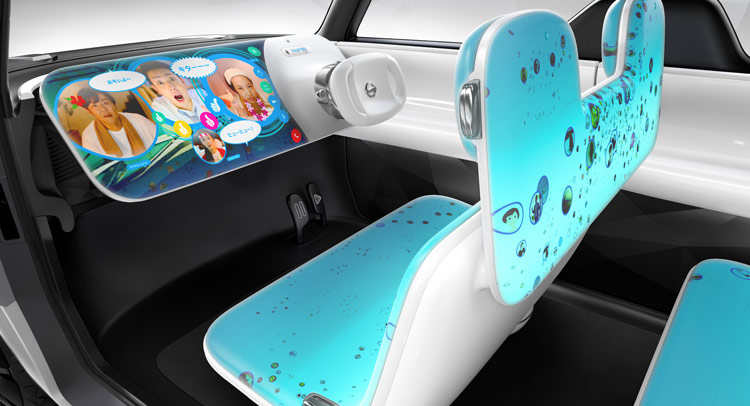The mobile device and social media addiction of our times have already caught up with automakers, but what if a car was specifically designed to cater to the needs of what we’d call the Digital Generation?
Nissan labels the generation “that went straight from the cradle to digital technology as ‘share natives'”, but we think we’ll stick with Digital Generation, which some also refer to as Generation Z, for the demographic cohort born from the early to mid-2000s until today.
According to Nissan’s Product Planning General Manager Hidemi Sasaki, “The generation now getting their first driver’s licenses has always been connected through digital devices, email, social media and so forth. What moves these digital natives is capturing experiences in photos and videos and sharing them. Friends respond with `likes’ and share the experience further. What’s important is not whether something is experienced personally or virtually. What matters is the process of sharing.”
The thing with this generation is that, as Nissan pointed out, it “has shown little interest in cars so far” which begs the question, “What kind of cars will move share natives? Will they even want to drive?”
The Japanese brand’s conceptual answer to this puzzling question is the ‘Teatro for Dayz’ that will make its world premiere at the 2015 Tokyo Motor Show that will run from October 30 through November 8.
Of course, as a mobile device on wheels, the ‘Teatro for Days’ is a small, battery powered car. “In addition to being compact, minicars remind them of the handy mobile devices they carry in their pockets,” says Sasaki. “Share natives are already accustomed to recharging their devices at home, so EVs fit their lifestyles far better than cars that require regular visits to a gas station.”
And yes, it does look like a modern replacement for the discontinued in Europe and North America, albeit still available in Japan, Nissan Cube, but with a few digital tricks up its sleeves.
Sasaki says that Nissan found some common car interests among this generation:
“First, they tend to look beyond the car’s basic role of transportation. They want a car to be a versatile tool for creativity like a smartphone. This is different from customizing a car. It is more like the ability to modify a car to meet their mood at that moment. Share natives will use cars in ways we would never imagine. So we thought from the perspective of designing a car that would serve as a canvas for their inspiration.”
So, Nissan’s designers packed the exterior, but even more so, the interior, with customizable screens. On the outside, you get LED displays on both bumpers and the doors, allowing users to express themselves through dotted images and words.
However, it’s the cabin that takes the mobile device theme to extremes. When in drive mode (think of it as the equivalent of ‘Airplane Mode’, it’s a minimalistic looking two-tone, black and white interior with meters, controls and maps appearing on a pure white screen – also, notice the ‘play’ and ‘pause’ designated pedals. Put the car in park mode, though, and a third of the interior, including the dashboard panel, the (uncomfortable looking) seats and even door trim, become a live display – akin to skins on phones and tablets.
Granted, some of the skins used on the concept look cheap and cheesy – like the wood and leather displays, but with autonomous cars right around the corner, evidently, carmakers need to find ways to keep users and passengers busy while inside and what a better way to do this by cramping a multitude of screens in their interiors? Well, come to think of it, if this is what they want, why not add Virtual Reality headsets with software designed around the interior for all passengers and be done with it? Hey, you could even re-skin the person sitting next to you…


































